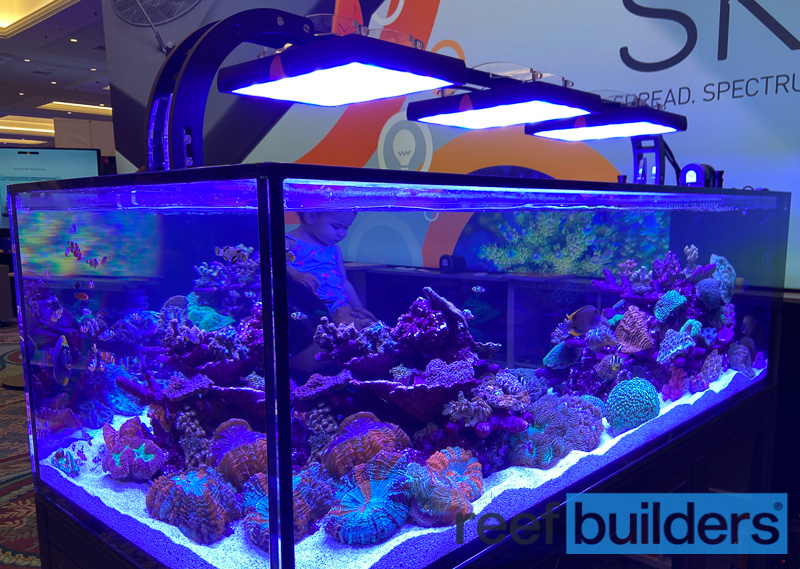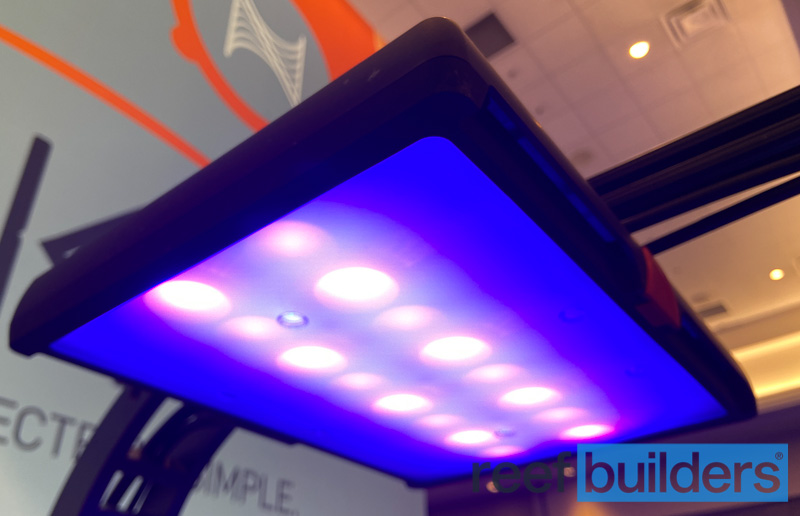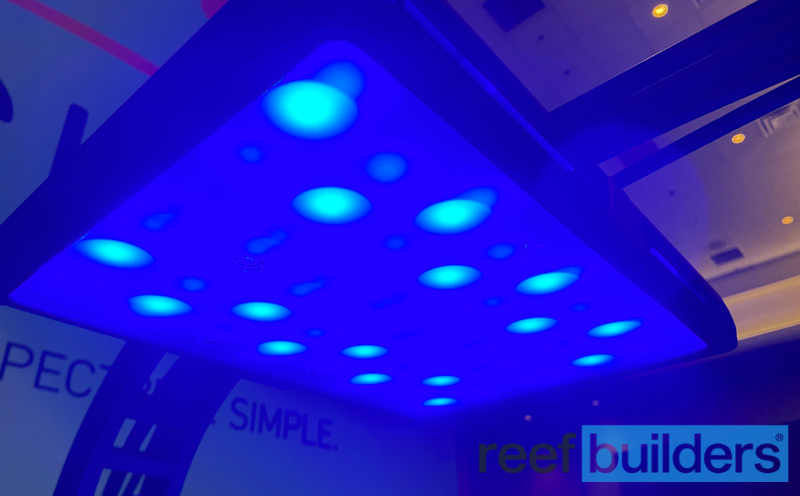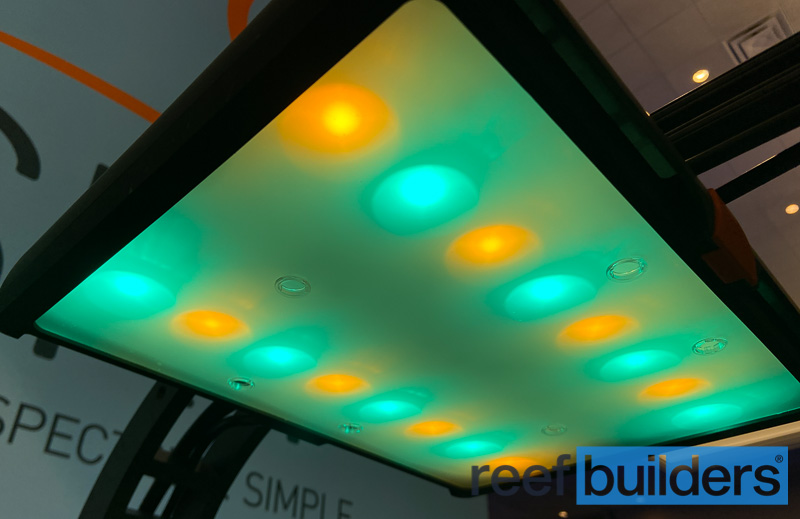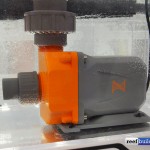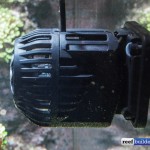2021 has been a very exciting year for new LED reef aquarium lights and we’re currently experiencing the most robust selection of lighting options the hobby has ever enjoyed. Last year we got new flagship lights from Ecotech Marine, Maxspect has started offering some really high value Jump LED Panels, earlier this year Kessil launched it’s most powerful spotlight ever, and most recently Neptune Systems staked its claim on one extreme end of the lighting market with a very specialized, flat light field design called the SKY LED.
Most aquarium lighting fixtures are populated by clusters of tightly spaced diodes for better color mixing, the Kessil A500X is fully committed to point source illumination, meanwhile Neptune Systems took a lot of inspiration from the Philips’ CoralCare with its heavily diffused panel style LED light. We’ve already discussed the contemporary and spotlight style reef aquarium lighting fixtures but now that we’ve learned the specifications of the long rumored SKY LED, observed it over live corals, and have had some time to consider what this light fixture represents, we have formulated some thoughts about this particular approach to LED reef aquarium lighting.
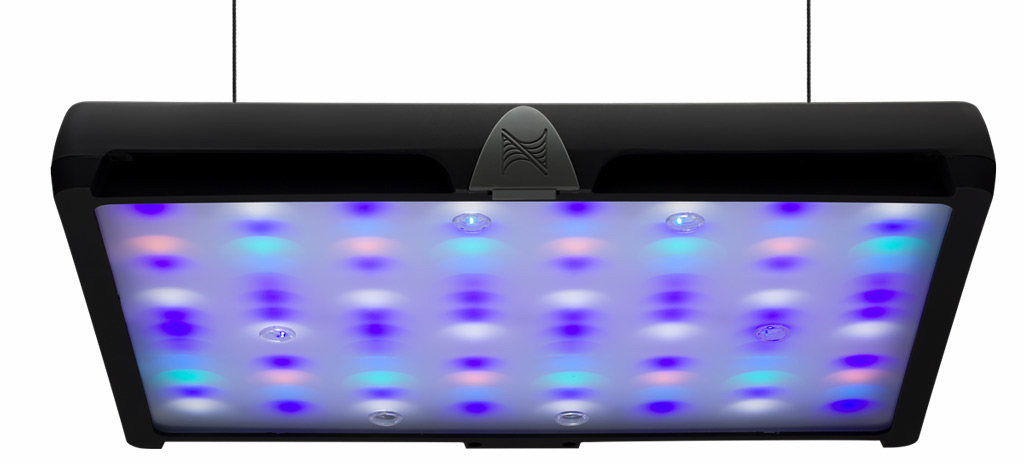
Some of these takeaways are specific to the Neptune Systems SKY, others are a reflection on other lights through the lens of what Neptune Systems is advocating, so in no particular order these are 10 key takeaways from the forthcoming SKY LED light.
Very Modern Spectrum – The AquaIllumination Sol was the first truly successful reef aquarium LED light which began with a ratio of around one blue for every two white LEDs, after a few years it was enriched with a bluer spectrum and inverted the ratio of blue to white spectrum. Many different companies followed in their footsteps with diodes that were more than half blue, royal blue, and ultraviolet, and most recently Red Sea took this approach to the extreme with a heavily blue spectrum and only 10% of the power in ReefLEDs being dedicated to white LEDs.
The Neptune Systems SKY LED has what we would consider to be a very ‘modern’ spectrum with a balance of blues, whites, which are complimented by a reasonable number of accessory colors. What we mean by a modern spectrum is that of course there is a ton of blue light available, but the overall color balance of the aquarium fish and corals isn’t washed out when all color channels are set to 100%.

Amber & Cyan – While virtually all reef aquarium lights put most of their energy into blue LEDs for color and white LEDs for PAR intensity and growth, the better lights have always injected a boost to the color rendition through the use of various shades of red and green LEDs in small quantities. Red and green are natural choices for combining with blue to form the three primary colors of white lighting, but their ‘distance’ from blue LED wavelengths can generate a kind of ‘spectral separation’ resulting in disco ball effects where the light is poorly mixed.
To combat this separation of lighting colors reef aquarium lights like the Philips CoralCare and Reefi LED started using amber and cyan LEDs instead, resulting in more closely spaced light colors that are less distracting when poorly mixed, and which can create a more uniform color balance on our aquariums. The Neptune Systems SKY LED doesn’t have any discrete red or green diodes and instead uses the amber + green method in their lighting panel, giving this light a distinctive color.
Photo Mode – The Neptune Systems SKY LED has a special ‘Photo Mode’ which sets all color channels to a ratio which is very balanced overall that is both very pleasing to the eye, but enables most modern smartphones to take realistic photographs which aren’t too blue or too white, but still incorporate a certain degree of fluorescent pop without the use of yellow or orange filters. The photo mode of the SKY LED is bolstered by the use of the amber and cyan LED colors which we hope will help to counter the unrealistic reef tank photography that dominates social media.
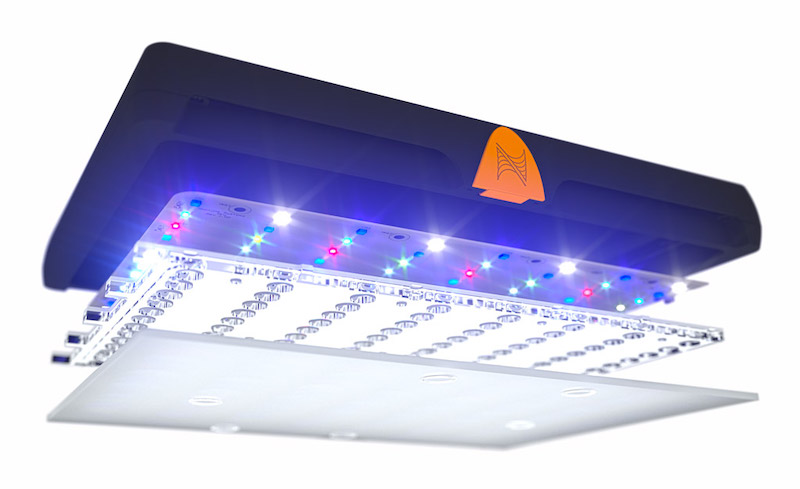
CoralCare Light Uniformity Patent – Neptune Systems had to strike a delicate balance when creating a broad lighting panel with numerous diodes of different colors while avoiding the poor color blending when multicolor light emitting diodes aren’t grouped together in closely spaced clusters. Neptune Systems had the benefit of taking notes from two generations of Philips CoralCare LED lights which was more than a model for the SKY LED.
No one would be surprised if the SKY LED had a Philips badge instead of the Neptune Systems logo and this is no coincidence because the SKY LED uses elements that are a indistinguishable to the Philips patent #20170356626 “Lighting panel adapted for improved uniformity of light output”. Neither Philips or Neptune Systems has confirmed the actual licensing of the patent but the SKY LED’s color mixing layer clearly visible between the LEDs and the diffuser is an unmistakeable match for the diagrams included in the patent filing and what we’ve seen in the Philips CoralCare Gen2 light fixture.
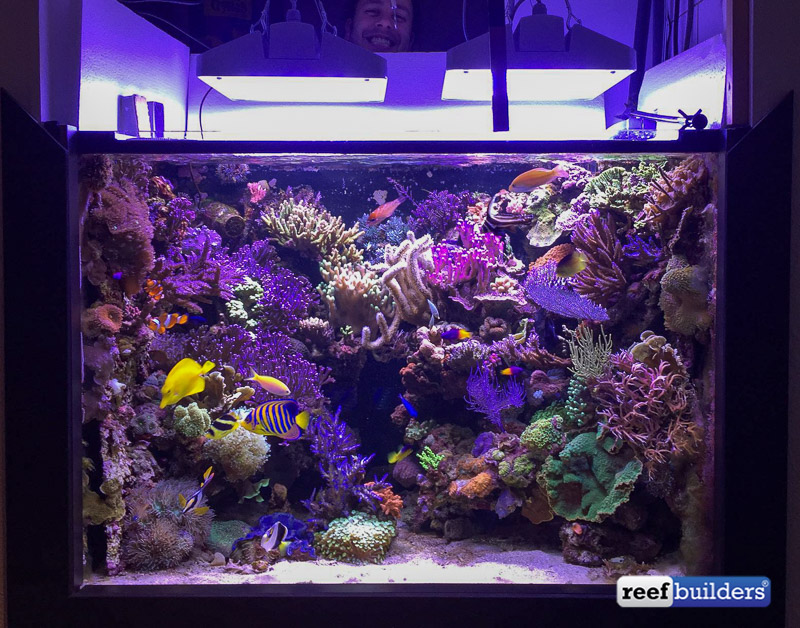
PAR Uniformity of a Flat Light Field – Philips’ patented light mixing technique used in the SKY LED is incredibly effective at creating a very uniform field of light both in terms of color mixing and lighting intensity. There is no question that having a more diffused and even distribution of light with light rays hitting our three dimensional corals from every direction will result in better growth, especially in densely branching colonies such as Acropora, Seriatopora, and many species of light hungry SPS corals.
For years LED light makers boasted about peak PAR numbers by concentrating the light given off by LEDs through the use of secondary lenses that beam light mostly downwards. Over the years we’ve learned that an Acro will grow much better in a diffused light field of 200 umols/m2/s coming from every direction than it will under highly directional light with a PAR value of 400 umols/m2/s so we really need to take this into consideration when evaluating PAR values of the SKY LED and comparing these to other fixtures.
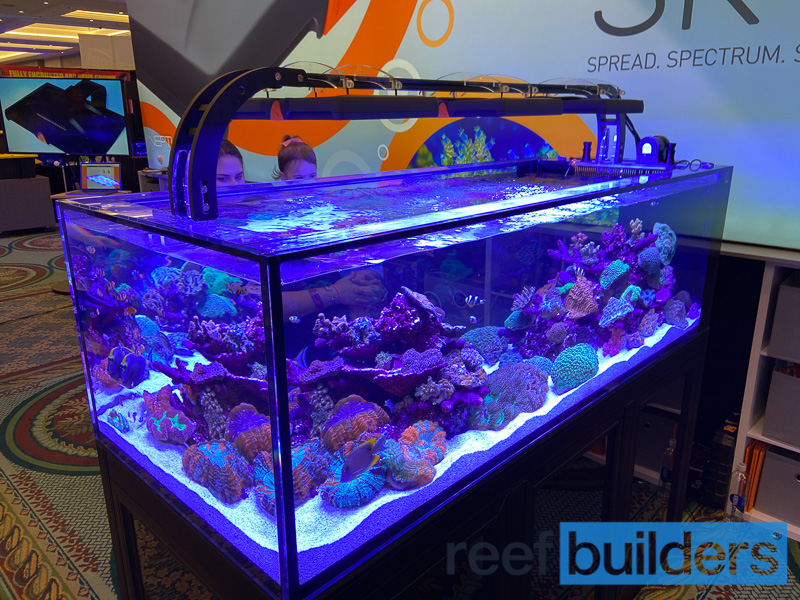
Appearance of a Flat Light Field – One of the first thing that struck us about the SKY LED when we first saw it over a reef tank with live corals was how much it reminded us of a tank illuminated by a panel full of T5 fluorescent lamps. If two tanks were placed side by side and one had the SKY LED and the other had classic T5s over it, we don’t think many people could distinguish between them and we’re not sure we could even tell them apart.
As we stated above we have zero reservations that the SKY LED will excel at growing light hungry corals but a flat light field over a reef tank is a very distinctive look and it will not appeal to everyone. If you got your start in the reefing hobby during the heyday of VHO and T5 fluorescent lighting you might really love the look of the SKY LED but if you are either much older when metal halides were all the rage, or much newer during the reign of Radions, Kessils, and Hydras, you might be turned off by the really flat appearance of tanks lighted by the SKY. More than any other fixture, reefer’s opinions about the SKY LED is likely to be strongly influenced by personal preference and subjective criteria.
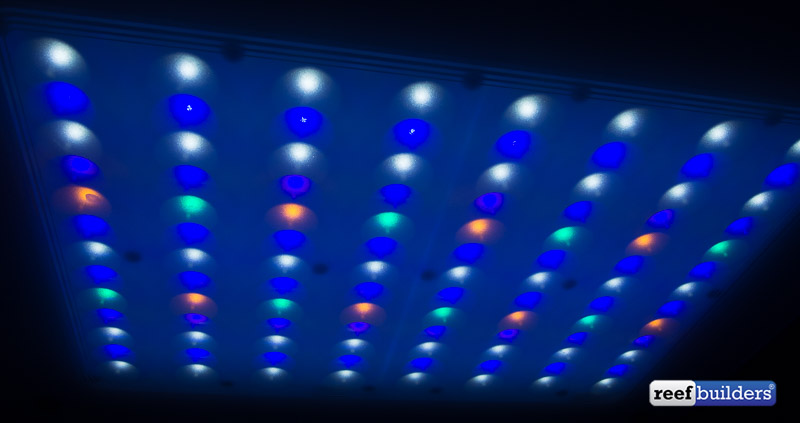
Very Specialized Design – For better or for worse, the Neptune Systems SKY LED is a very specialized design but there is a certain degree of compromise when a product puts all of their eggs in one basket. The best analogy in consumer electronics we could come up with is that a very powerful computer is not practical to use as a portable device, while an energy efficient computer may not excel at intensive games but it will have excellent battery life.
With its color mixing layer and secondary diffuser layer the SKY LED is extremely specialized at creating very flat, uniform lighting but since it has no lenses, it must be mounted very close to the water surface of the aquarium. We’ve become very partial to mounting lights higher and angling them to achieve better illumination of corals for a more pleasing overall presentation of the tank and lights, but with the SKY LED you are confined to a very narrow range of mounting possibilities. Neptune Systems would probably argue that a flat light distribution obviates the need for tilting reef aquarium lights but once again this detail falls mostly under personal preference.
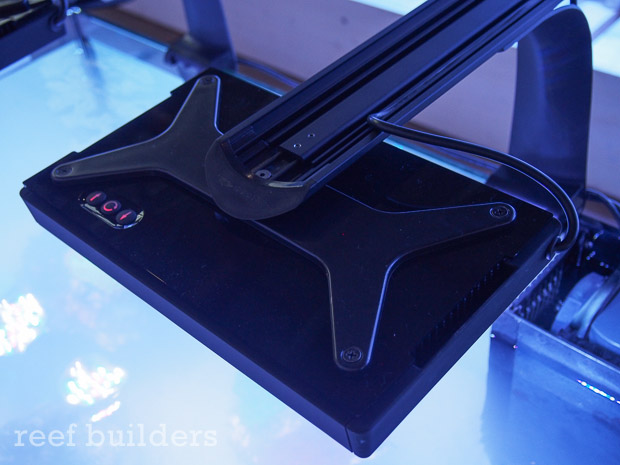
Radion Mounting System – Creating a brand new and technically demanding reef aquarium light takes a lot of work and engineering so it can be hard to flesh out all the accessories needed to get it up and running over a tank. A lot of lighting fixtures in the past have been released with no dedicated mounting options so it’s not surprising that Neptune Systems designed their mounting holes to piggy back on one of the most popular reef aquarium lights on the market, the Ecotech Marine Radion.
It is clever and a little bit sneaky for the SKY LED to have the exact same mounting holes as the Radion making it compatible with widely used Radion Mounting System and Neptune Systems is not the first company to ride Ecotech Marine’s coattails with the tank mount. Being compatible with the Radion Mounting System makes the SKY LED interchangeable with Radions giving potential buyers the options to try out the SKY LED without having to buy an all new mounting setup.
The details of the SKY LED discussed above are not likely to be controversial, but we’ve saved the best and worst of Neptune Systems’ new light for last.
Four Control Channels – The most disappointing specifications of the SKY LED are the paltry four color control channels and a severe disappointment from a controller company that bills itself as catering to reef aquarium “control freaks”. Sure some users might be overwhelmed by having eight or nine control channels and of course it’s simpler to simply have two control channels like in the CoralCare but only four control channels, really Neptune?
The marketing for the SKY LED will claim that the four simplified color channels makes it easier for users to program the light but not giving users the option to fine tune the spectrum with more color channels is strictly a cost-saving measure, pure and simple. There is no other reason that Neptune Systems only designed four color channels because more drivers means more cost, and grouping similar channels in software to create a ‘simple control’ mode would be no different. Arguably most reefers set their lighting programs once and very rarely tweak their spectrum and intensity, but for power users accustomed to having the option to fine tune white from warm white, blue from royal blue, and dive into the accessory colors, having only four color channels in the SKY LED will feel like a downgrade.

Synergy with PAR Meter – The Apex-compatible PAR meter has been available for years and during most of that time it felt mostly like a curiosity, an accessory with questionable merit or value. However with the announcement of the SKY LED suddenly the Apex’s PAR meter seems incredibly more relevant since there is a unique potential for synergy between the light that the SKY LED produces and the intensity measured and recorded by the PAR meter.
We’ve long refused to participate in lighting reviews with a heavy emphasis on PAR numbers because the dynamic spectrum and lighting intensity current reef lights would necessitate a much deeper description PAR throughout the tank and throughout the day. However with the Apex PAR meter the total light hitting the aquarium can be automatically measured and calculated with a value known as ‘insolation’ or Daily Light Integral or DLI. Knowing the total light that our corals receive is incredibly more informative than point measurements of PAR in space and over time so we think there’s some ground breaking potential for SKY LED users in the future to not only set automatically their desired maximum PAR values, but also the total light energy that a reef tank receives throughout the day.

These are our top 10 takeaways from seeing and learning about the SKY LED but there’s many other details that reefers have been discussing with varying degrees of importance. It does seem a little upside down that reefers who want to use the SKY LED without an Apex can connect to it wirelessly, but if you want to use as part of the Apex controller ecosystem you have to connect to it with a physical wire using the integrated AquaBus cable.
Neptune Systems has tried to include other devices to their ecosystem through their Internet of Things Aquarium (IOTA) program which can connect wirelessly, so we know it’s technically feasible, but Neptune Systems’ own hardware has to be physically connected which might be more reliable but doesn’t seem very progressive in an environment where ALL of our return pumps, flow pumps, lights, and dosing pumps have wireless control and programming.
Our last major consideration about the SKY LED is about when the next one will be released. Sure the first light hasn’t yet been released but most lighting manufacturers have learned a lot from their first releases, and quickly iterated with new and improved versions to address feedback from their users. Meanwhile Neptune Systems has historically been very content with their first edition products and they’re still selling the same version of the DOS pump first released in 2014, the same version of their Auto Feeder first released in 2013.
WAV and COR pumps are also still on their first iterations, the original Apex didn’t get a refresh for more than seven years, and now the new Apex is getting a little long in the tooth at nearly five years old. This is really not of great concern in regards to basic powerheads, heaters or protein skimmers but smartphone and computer manufacturers come up with new models and at least some incremental improvements every year.
We’re not saying that Neptune Systems needs to refresh their product line every 12 months but for an ecosystem that has an ‘aquarium computer’ as its cornerstone, we certainly feel like there’s always room for improvement when it comes to smart reef aquarium devices, and Neptune Systems is more than a little out of step with the unrelenting progress of general consumer electronics. Since it’s not even released yet the shine and luster of the SKY LED hasn’t even begun to fade but hopefully we’ll see more steady refinements to this new reef aquarium light over time and that Neptune Systems will be more aggressive about improving this all important piece of hardware than they have been with their other pumps and devices.
The SKY LED is an interesting new option for reefers who want a very uniform, even light field with a minimum of shadows in their corals and their aquascape. Current Apex users will appreciate having a new LED light that is native to the Neptune Systems ecosystem with one less app on their smartphone, and some interesting potential to understand just how much their tank is receiving with the Apex PAR meter. With the Neptune Systems SKY LED not too far off from being released to the general public, it’s only a matter of time until more nuanced details of this new light are sussed out, and the community discovers what this light can and can’t do for our reef aquarium corals.


